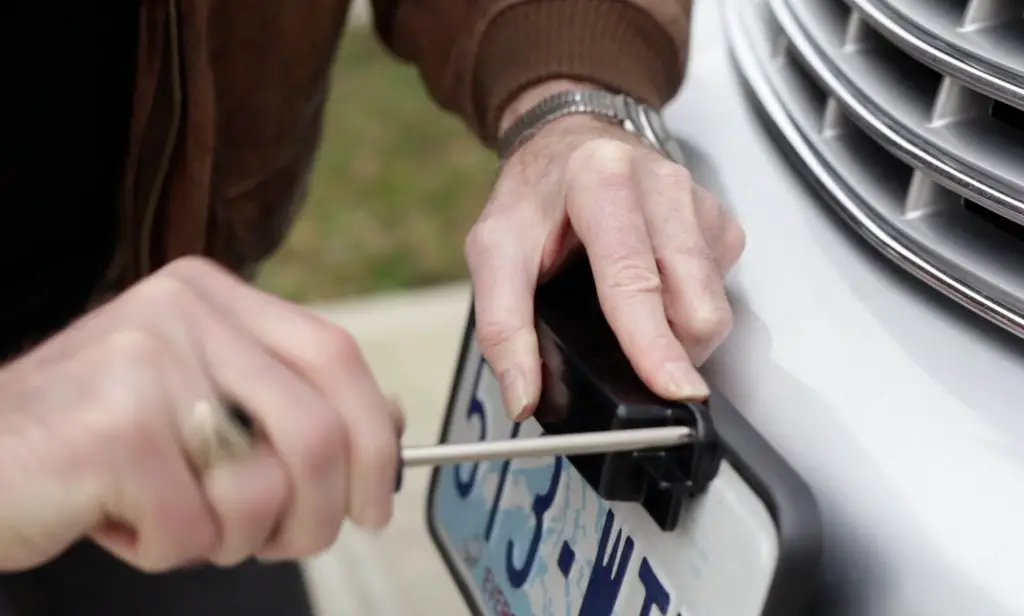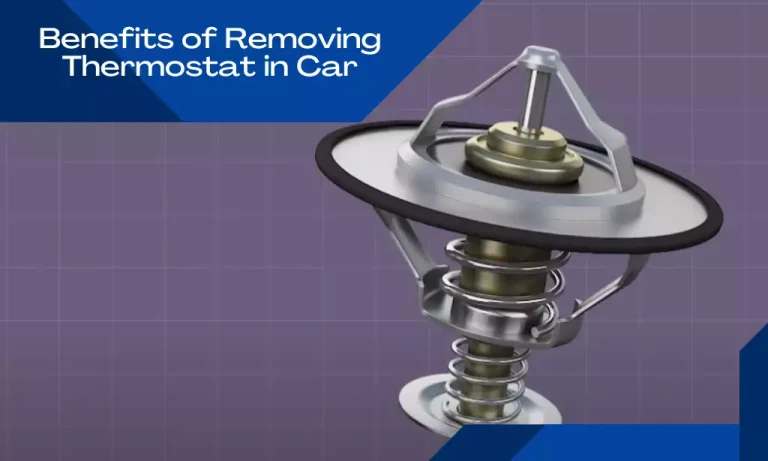What Size Are License Plate Screws? [Choose the Right Size]
The standard license plate screw size in the United States is typically a 14 x 3/4 inch screw. Keep in mind that sizes may vary by location and regulations, so it’s always a good idea to double-check with local authorities or a hardware store if you’re uncertain.
What Size Are License Plate Screws?
License plate screws are standardized in terms of their size, which ensures uniformity and compatibility across vehicles. In the United States, the most common size for license plate screws is a 14-diameter with a length of 3/4 inch.
This refers to the screw’s diameter and length in inches. The threads on these screws are designed to fit the standard mounting holes found on most license plates and vehicles. It’s worth noting that while this size is widely used, there may be variations depending on local regulations or specific vehicle models.
Therefore, it’s always advisable to consult local authorities or refer to the vehicle’s manual for any specific requirements. Additionally, in some regions, specialized screws with features like anti-theft mechanisms may be recommended for added security.
License Plate Screw Size By Manufacturer
I’ll provide a breakdown of license plate screw sizes based on different manufacturers, ensuring you have precise information for your purchase. It’s worth noting that certain manufacturers might utilize varying license plate screw dimensions. Conducting thorough research on the specific screw size for your model is crucial to ensure accuracy.
Audi License Plate Screw Size
The license plate screw size for most Audi models is typically a metric M6x20, which means it has a 6mm diameter and a 20mm length.
BMW License Plate Screw Size
The license plate screw size for most BMW models is typically a metric M6x16, which means it has a 6mm diameter and a 16mm length.
Chevrolet License Plate Screw Size
The license plate screw size for most Chevrolet models is typically a standard 14 x 3/4 inch screw. However, it’s important to note that there may be variations depending on the specific Chevrolet model and year. It’s recommended to double-check the owner’s manual or consult with a Chevrolet dealership to confirm the exact license plate screw size for your particular vehicle.
Chrysler License Plate Screw Size
The license plate screw size for most Chrysler models is typically a standard 14 x 3/4 inch screw. However, it’s important to be aware that there might be variations depending on the specific Chrysler model and year. It’s recommended to consult the owner’s manual or get in touch with a Chrysler dealership to confirm the precise license plate screw size for your particular vehicle.
Ford License Plate Screw Size
To secure your license plate on a Ford vehicle, you’ll require screws with dimensions of 1/4″ in diameter and 3/4″ in length. These screws feature a 3/8″ hex slotted head, designed to be fastened using either a flathead screwdriver or a 3/8″ drive socket. They are compatible with both plastic and nylon retainers. These screws are available in stainless steel, black zinc, or chrome finishes for your preference.
Dodge License Plate Screw Size
I’ve come across an excellent kit tailored for Dodge vehicles. It comprises zinc-plated stainless steel screws, along with foam pads, washers, screw inserts, and covers. The screws have the timeless dimensions of 1/4″ in diameter and 3/4″ in length, featuring a 3/8″ slotted hex head for easy tightening using either a socket or a flathead screwdriver.
GMC License Plate Screw Size
GMC license plates are compatible with standard hex head screws. This black oxidized kit not only enhances aesthetics but also boasts universal dimensions of 0.75″ x 0.25″, fitting most vehicles seamlessly. Crafted from 18-8 stainless steel, these screws are highly resistant to rust and degradation, a crucial quality for a metal component exposed to the elements.

Honda License Plate Screw Size
Honda license plates are secured with M6 metric-sized screws, and this set of 12 should suffice. The front plate screws are self-tapping, whereas the rear ones come in two different sizes. The stainless steel build comes with an added benefit of a lifetime warranty, providing significant peace of mind.
Hyundai License Plate Screw Size
Hyundai employs smaller license plate screws compared to other manufacturers. The rear plate screws have a diameter of 0.23″, a head size of 0.46″, and a thread length of 0.64″. These screws, made from standard 316 stainless steel, are compatible with most Hyundai vehicles. For the front license plate, a socket or flathead screwdriver is needed, while the rear screws require a Phillips head.
Lexus License Plate Screw Size
Lexus employs a unique approach, utilizing screws with dimensions of 0.50″ x 0.55″ x 0.50″, featuring a fine thread. Despite this distinction, they are essentially standard 316 stainless steel screws that can be fastened using a small to medium-sized Phillips head screwdriver.
Mercedes-Benz License Plate Screw Size
“Mercedes-Benz employs pan-head stainless steel screws with a Phillips head screwdriver slot. Each package includes four 5mm screws and four 6mm screws, ensuring compatibility with a wide range of Mercedes-Benz vehicles. The thread measures 16mm (or 0.63″) in length, providing an extended reach suitable for accommodating a license plate holder.”
Mazda License Plate Screw Size
This kit is ideal for both front and rear Mazda plates. It includes self-tapping screws for the front plate and four screws with a finer thread designed for the rear. These screws are suitable for use with license plate frames and are compatible with nearly all Mazda models. While the manufacturer hasn’t provided precise specifications, one might presume they have a 5mm diameter with a thread length between 12-16mm.
Nissan License Plate Screw Size
For Nissan vehicles, these screws are available in two options: standard 1/4″ and extended, allowing you to either affix the plate directly or use a license plate holder. Crafted from stainless steel, they are resistant to rust even in challenging weather conditions.
Tesla License Plate Screw Size
Tesla license plate screws typically measure 5-6mm in length. The rear license plate screws specifically are M5-0.8×6. These stainless steel screws feature a pan head style and can be easily installed using a Phillips screwdriver.
Toyota License Plate Screw Size
For Toyota vehicles, you’ll require screws measuring 0.50″ x 0.75″ x 0.50″ to securely fasten the license plate. These 316 stainless steel screws are suitable for the task and can be affixed using a Phillips head screwdriver. It’s important to note that these are extended screws, designed to be used with a license plate holder. If you’re mounting the plate directly, you may want to opt for the 0.65″ long variant.
How to Replace Broken License Plate Bolts?
What’s the Best Place to Buy License Plate Screws?
The best place to buy license plate screws depends on personal preference and convenience. Many automotive supply stores, both physical and online, offer a wide selection of license plate screws. Major retailers like auto parts stores, hardware stores, and even some big-box stores often carry them.
Online marketplaces like Amazon, eBay, and specialized automotive retailers also provide a vast array of options, making it easy to find specific sizes or materials. Additionally, dealerships or official brand stores for specific car makes may carry screws tailored to their vehicles.
It’s crucial to ensure that the screws meet any local or state regulations, and that they are compatible with your specific vehicle model. Checking customer reviews and ratings can also provide helpful insights into the quality and durability of the screws.

How do you Replace License Plate Screws?
Replacing license plate screws is a straightforward process that requires minimal tools. Here’s a step-by-step guide:
- Gather Necessary Tools: You’ll need a screwdriver that matches the type of screws on your license plate. Most commonly, this will be a Phillips head or flathead screwdriver.
- Remove the Old Screws: Use the appropriate screwdriver to turn the screws counterclockwise to remove them. If the screws are rusted or corroded, you may need to use a bit of penetrating oil to loosen them.
- Clean the Area: Wipe down the area around the license plate with a clean cloth to remove any dirt or debris. This ensures a clean surface for the new screws.
- Position the License Plate: Hold the license plate in position over the mounting holes. Make sure it’s level and properly aligned.
- Insert the New Screws: Take the new screws and insert them through the holes in the license plate into the corresponding holes on the vehicle.
- Tighten the Screws: Using the screwdriver, turn the screws clockwise to tighten them. Be careful not to overtighten, as this could damage the plate or the vehicle’s surface.
- Check for Secure Attachment: Gently tug on the license plate to ensure it’s securely fastened. Make sure it doesn’t wobble or move.
- Inspect and Adjust: Double-check the alignment and positioning of the license plate. If needed, make minor adjustments.
- Dispose of Old Screws: If the old screws are damaged or worn, it’s advisable to dispose of them properly.
Frequently Asked Questions
What happens if I use the wrong size license plate screws?
Using the wrong size license plate screws can lead to an insecure attachment of your license plate. It may result in rattling, loosening, or even the plate falling off while driving. Additionally, using screws that are too long may cause damage to the vehicle’s surface or interfere with internal components. It is important to ensure the correct size for a secure and proper fit.
Are license plate screw sizes standardized?
While there are standard and metric sizes commonly used, license plate screw sizes can vary depending on the vehicle make, model, and region. It is recommended to measure the mounting holes on your license plate and vehicle to determine the exact size required for your specific situation.
Q3. Can I use different screw sizes for different holes on my license plate?
It is not recommended to use different screw sizes for different holes on your license plate. Using mismatched sizes may result in an uneven and unstable attachment. It is best to use the same size screws for all mounting holes to ensure a secure and uniform installation.
Can I reuse my old license plate screws?
Reusing old license plate screws is possible if they are in good condition and the correct size for your new license plate. However, it is recommended to inspect the screws for any signs of wear, damage, or corrosion. If in doubt, it’s safer to replace them with new screws to ensure a secure attachment.
Are tamper-resistant screws necessary for my license plate?
Tamper-resistant screws are not a requirement for all vehicles but can provide added security against theft or vandalism. They have unique head designs that require special tools for removal, making it more difficult for unauthorized individuals to tamper with your license plate. Consider using tamper-resistant screws if security is a concern in your area.
Can I use adhesive or tape instead of screws to attach my license plate?
While adhesive or tape may seem like a convenient alternative, it is generally not recommended as the primary method of attaching a license plate. Adhesive or tape alone may not provide a secure and reliable attachment, especially in adverse weather conditions or high-speed driving. License plate screws offer a more robust and long-lasting solution.
Summary
Acquiring fresh license plate screws can be a straightforward process. In this guide, we’ve outlined choices for the leading brands to ensure you find the correct size. Installing the license plate is a simple task, requiring only a screwdriver and a plate bracket. Alternatively, you can opt to drill through the plate for a direct installation.
- Why Are My Car Headlights Not Bright Enough? - May 9, 2024
- How Long Can You Drive With An EVAP Leak? - May 9, 2024
- What Does B Stand for in a Car? [Full Guide] - May 9, 2024





![Find out the Cost to Lower a Car [Get the Best Deals!]](https://automhelp.com/wp-content/uploads/2023/07/Find-out-the-Cost-to-Lower-a-Car-768x461.png)

